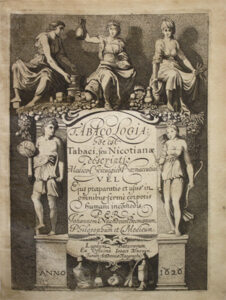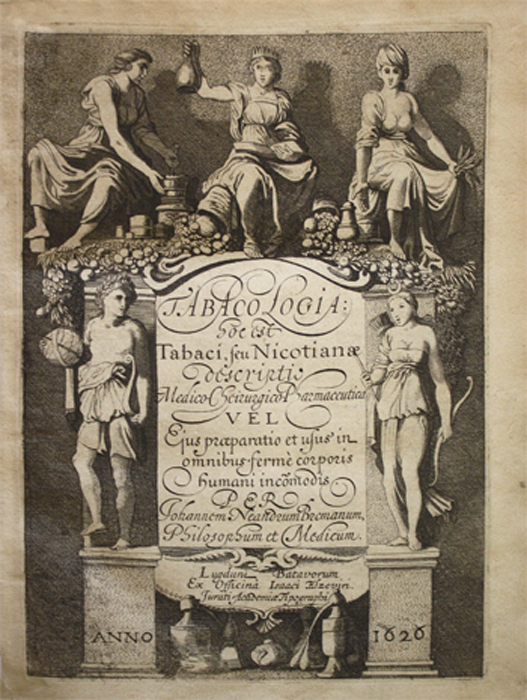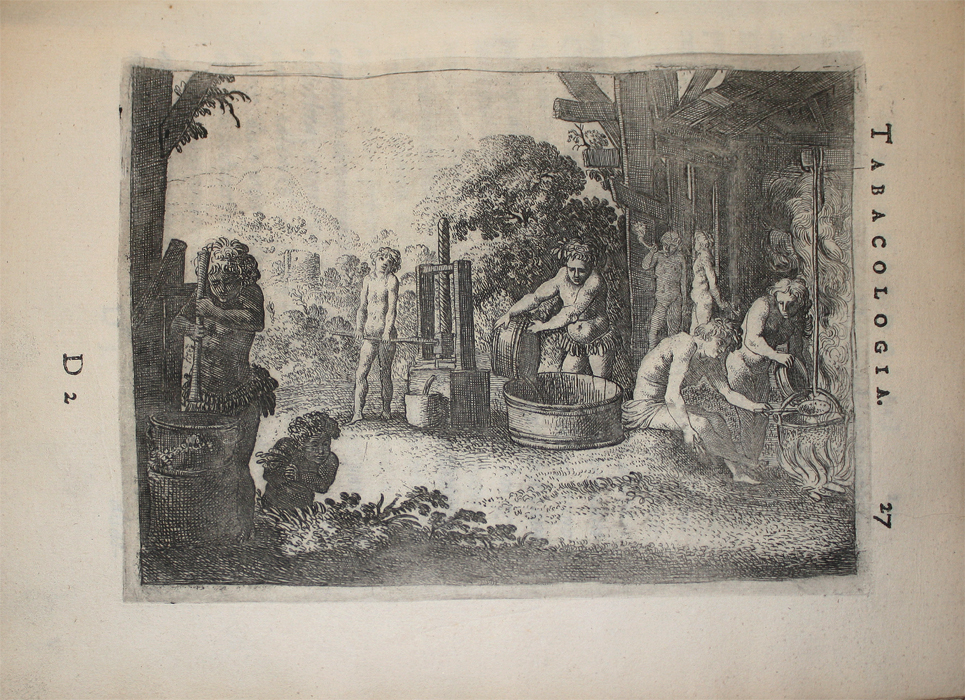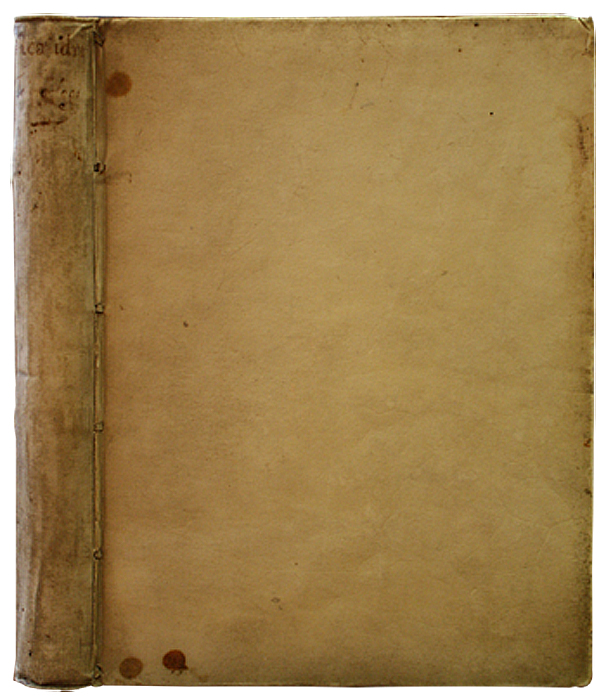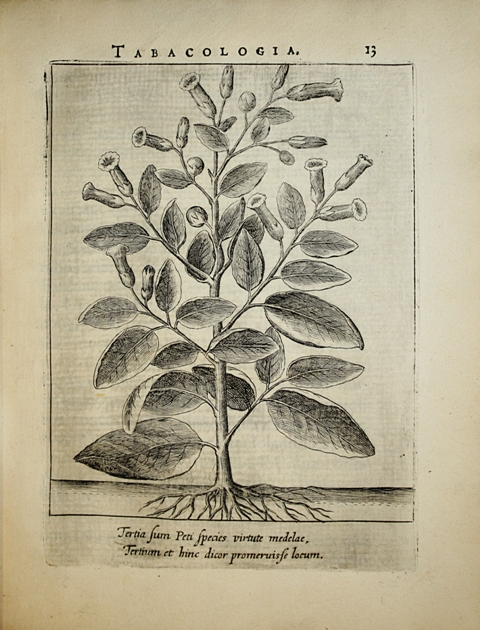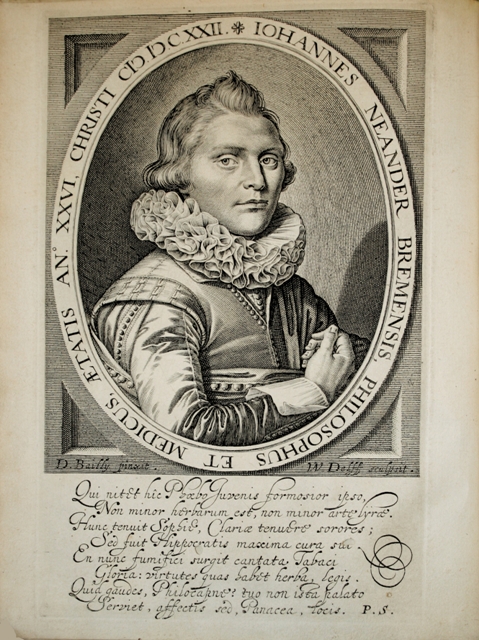Lugduni Batavorum, Isaac Elzevier, 1626.
4to [217 x 164 mm] of 1 frontispiece, 1 portrait of the author, (18) ll., 256 pp., (4), 9 full-page plates in the text. Small loss in the white margin of p. 207. Handwritten ex libris on the endleaf in black ink. Bound in contemporary stiff overlapping vellum, flat spine with the handwritten title. Contemporary binding.
Second edition, the most complete, of one of the most important works related to tobacco. Arents, II, n°148; Willems, Les Elzevier, 257; Bibliotheca Osleriana, 3490; Leclerc, Bibliotheca Americana, 3399; Sabin 52173; Bragge, Bibliotheca Nicotiana, 27.
The Tabacologia of Neander is one of the most important works related to tobbaco; the present edition is the most accomplished, it is this one that figured in the famous Candolle collection (Catalogue des ouvrages prélinnéens de la bibliothèque des Conservatoire et Jardin botanique de la ville de Genève, n° 135).
Neander, a German doctor who paid particular attention to the research of plants characteristics, is here studying tobacco. He recommends the use of long pipes, like the ones of Indians, in order to permit the cooling of the smoke. However, if he recommends the use of tobacco in the preparation of medicines, he is against an entertaining use of tobacco.
According to his statements, tobacco was « a plant created by God but the Devil interfered; to consume it excessively ruins the soul and the body. »
“The text is preceded by a list of varieties of tobacco, and is followed by letters to Neander from W. van der Meer, J. Raphelengius and Adrianus van Valkenburg…
Neander studied at Leyden and practiced at Bremen, his birth-place. Details of his life are unknown but he calls himself “Medicus, philosophus et poeta”. There are many editions of this ‘Tabacologia’, the first being an Elzevir, 1622, of which this is a good reprint…
The number of diseases for which tobacco was used is remarkable.” (Bibliotheca Osleriana, 3490)
“The little that is new in this treatise is of very definite value in the history of tobacco, and that little is rendered more impressive by the novel and accurate illustrations which decorate the work. Among them are the earliest representations known to us of American natives engaged in cultivating and curing tobacco, of curious pipes, and of the kalian of Persia. ” (Arents)
The present work is illustrated with a fine engraved title, a portrait of the author and 9 beautiful full-page copperplates showing tobacco plantations, harvesting scenes… The engraved frontispiece and Neander’s portrait are here in first state.
These engravings are of the utmost interest since they are the first known representations of Amerindians growing and smoking tobacco.
« 9 copper plates represent the plant, the harvesting made by the Indians and Indian pipes. » (Leclerc, Bibliotheca Americana, 3399).
A very beautiful copy of this treatise on tabacology illustrated with highly interesting engravings, preserved in its contemporary overlapping vellum binding.
